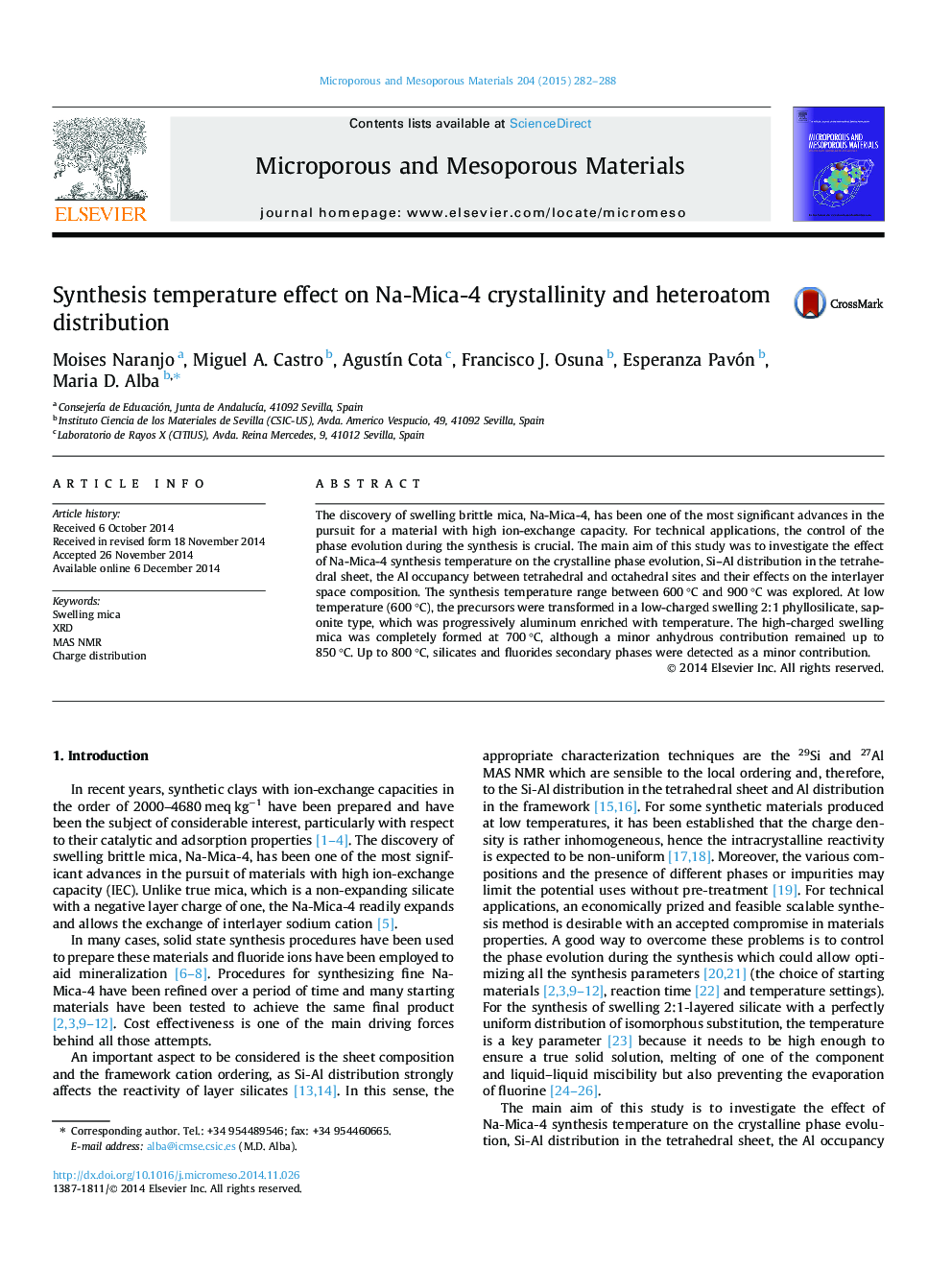| Article ID | Journal | Published Year | Pages | File Type |
|---|---|---|---|---|
| 72762 | Microporous and Mesoporous Materials | 2015 | 7 Pages |
•The synthesis temperature affects the crystallinity and local order of Na-Mica-4.•The high-charged swelling mica was completely formed at 700 °C.•A minor anhydrous contribution remained up to 850 °C.•Up to 800 °C, silicates and fluorides secondary phases were detected as a minor contribution.
The discovery of swelling brittle mica, Na-Mica-4, has been one of the most significant advances in the pursuit for a material with high ion-exchange capacity. For technical applications, the control of the phase evolution during the synthesis is crucial. The main aim of this study was to investigate the effect of Na-Mica-4 synthesis temperature on the crystalline phase evolution, Si–Al distribution in the tetrahedral sheet, the Al occupancy between tetrahedral and octahedral sites and their effects on the interlayer space composition. The synthesis temperature range between 600 °C and 900 °C was explored. At low temperature (600 °C), the precursors were transformed in a low-charged swelling 2:1 phyllosilicate, saponite type, which was progressively aluminum enriched with temperature. The high-charged swelling mica was completely formed at 700 °C, although a minor anhydrous contribution remained up to 850 °C. Up to 800 °C, silicates and fluorides secondary phases were detected as a minor contribution.
Graphical abstractFigure optionsDownload full-size imageDownload as PowerPoint slide
